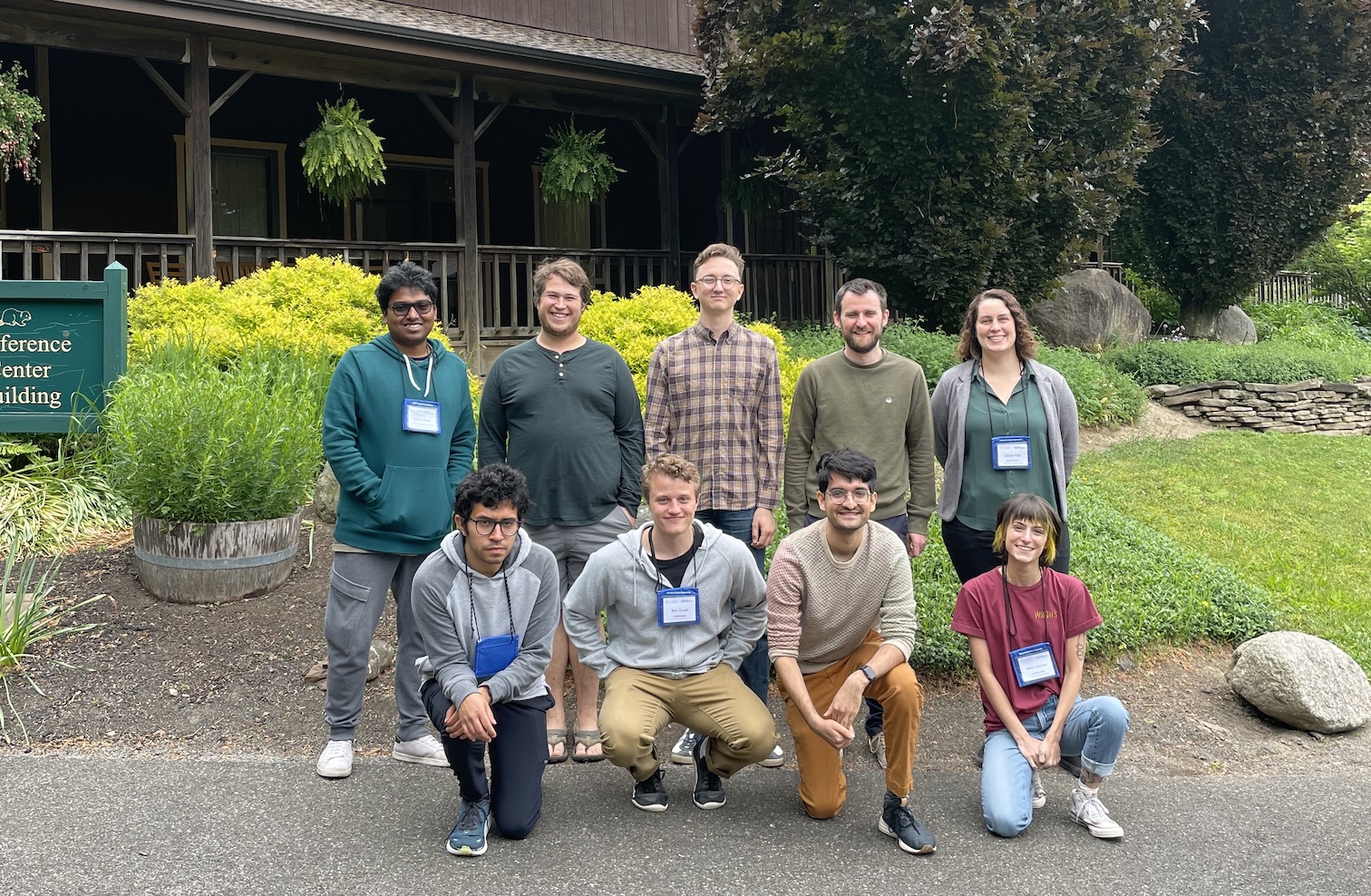New paper: On decompositions for Fano schemes of intersections of two quadrics
I'm really happy to announce that we have a new paper on the arXiv: On decompositions for Fano schemes of intersections of two quadrics. The we here refers to my coauthors Jishnu Bose, Sarah Frei, Ben Gould, James Hotchkiss, Alicia Lamarche, Jack Petok, Cristian Andres Rodriguez Avila, and Saket Shah. Here is all of us:

This picture was taken June 2023 in upstate New York, because the paper is a collaboration which started at the Mathematics Research Communities: Derived Categories, Arithmetic and Geometry, expertly organized by Matthew Ballard, Katrina Honigs, Daniel Krashen, Alicia Lamarche, and Emanuele Macrì, where I led a group of PhD students and postdocs on a week-long adventure ride on Fano schemes of intersections of two quadrics. One of the projects we were working on has now materialized in the form of this preprint.
Decompositions for varieties
In an earlier joint work with Sergey Galkin and Swarnava Mukhopadhyay we looked at how the moduli space of rank-2 bundles on a curve "decomposes" in several ways, the following 2 being relevant here:
- a semiorthogonal decomposition of its derived category
- an identity in the Grothendieck ring of varieties
This has led to what is called the BMGN conjecture (with Narasimhan independently conjecturing the semiorthogonal decomposition), which is now settled by Tevelev–Torres and Tevelev.
On the other hand, the very first example of a semiorthogonal decomposition was that of $Q_1\cap Q_2\subset\mathbb{P}^{2n+1}$, due to Bondal and Orlov, where the derived category of a naturally associated hyperelliptic curve appears.
It is possible to interpolate between this ur-example and moduli spaces of rank-2 bundles, by considering Fano schemes of linear subspaces on intersections of 2 quadrics. For $Q_1\cap Q_2\subset\mathbb{P}^{2n+1}$, we will denote these as $\mathrm{F}_k(Q_1\cap Q_2)$, for $k=0,\ldots,g-1$. For more on the geometry of these Fano schemes, I refer to our paper.
But what should the decomposition be?!
Hodge numbers and conjectures
To find out what the decomposition ought to be we can use the Hodge diamond cutter. With a bit of optimism,
- a geometrically meaningful identity in $\mathbb{Z}[x,y]$ on the level of Hodge diamonds
- might be arising from a decomposition in the Grothendieck ring of varieties,
- which in turn gives an identity in the Grothendieck ring of categories,
- which in turn might be arising from an actual semiorthogonal decomposition.
This type of optimism is of course not always warranted, but it is exactly what led the BGMN conjecture. So this brings us to what we did:
- we explained how to compute the Hodge numbers of these Fano schemes, by bootstrapping from earlier works of Chen–Vilonen–Xue: this is where we worked some magic with mixed Hodge modules;
- we found a mysterious (to me) formula for the multiplicity of each component, which can be checked numerically to be the right thing
Throughout I've focused on the "hyperelliptic" case, where the intersection of two quadrics is odd-dimensional. There is a parallel story for the even-dimensional case, which can be called the "stacky" case. Here, Fonarev has obtained a conjectural semiorthogonal decomposition in the "maximal" case, similar to the BGMN conjecture being the maximal case, and $Q_1\cap Q_2$ being the minimal case.
Our work thus describes aspects of the geometry of $\mathrm{F}_k(Q_1\cap Q_2)$ is
- for all dimensions of $Q_1\cap Q_2$, independent of the parity,
- for all $k=0,\ldots,g-1$.
Let me know if you have any comments or questions!